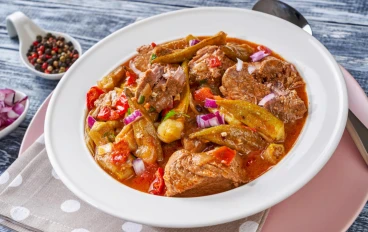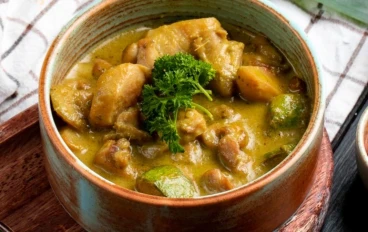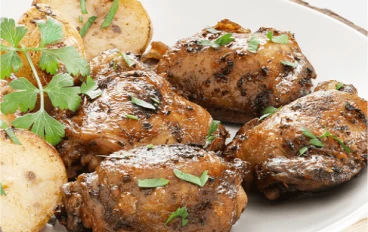
How to Make the Best Homemade Curry
Creating the best homemade curry is an art that combines vibrant spices, fresh ingredients, and precise techniques. In this guide, we will walk you through every step to craft a curry that rivals even the finest restaurant dishes. From selecting the right spices to perfecting the texture, follow along to master this culinary masterpiece.
Understanding Curry: A Symphony of Flavors
Curry is more than just a dish; it is a celebration of aromatic spices and cultural heritage. While variations exist across regions, the foundation of any curry lies in its blend of spices, fresh ingredients, and cooking methods.
Essential Ingredients for Homemade Curry
To create an authentic curry, you will need the following:
Spices: Turmeric, cumin, coriander, cardamom, cinnamon, and garam masala.
Aromatics: Fresh garlic, ginger, and onions.
Proteins: Chicken, lamb, fish, tofu, or chickpeas for a vegetarian option.
Vegetables: Tomatoes, potatoes, spinach, or eggplant.
Base: Coconut milk, yogurt, or stock to balance flavors.
Herbs: Fresh cilantro, mint, or curry leaves for garnish.
Step-by-Step Guide to Making the Best Homemade Curry
1. Gather Fresh Ingredients
The quality of your curry depends heavily on the freshness of your ingredients. Opt for organic vegetables and high-quality proteins to ensure rich flavors. Spices should be freshly ground for maximum aroma and potency.
2. Prepare Your Spice Mix
A homemade spice mix sets your curry apart. Here’s how to create a basic spice blend:
1 tablespoon turmeric
1 tablespoon ground coriander
1 teaspoon cumin
1 teaspoon ground cinnamon
1 teaspoon paprika
½ teaspoon ground cardamom
Toast these spices in a dry skillet over medium heat for 1-2 minutes until fragrant. Set aside.
3. Sauté Aromatics
Heat 2 tablespoons of oil in a large skillet or Dutch oven. Add finely chopped onions and sauté until golden brown. Stir in minced garlic and ginger, cooking for another minute to release their flavors.
4. Build the Base
Add your toasted spice blend to the pan, stirring until the aromatics are well coated. Next, incorporate diced tomatoes and cook until they break down into a thick paste. This forms the flavorful base of your curry.
5. Cook the Protein or Vegetables
If using meat, brown it in the pan with the spice mixture. For a vegetarian curry, add chopped vegetables and sauté until lightly tender. Ensure every ingredient is evenly coated with the spice base.
6. Add Liquid and Simmer
Pour in coconut milk, yogurt, or stock, depending on the curry style you prefer. Stir thoroughly and bring the mixture to a gentle boil. Reduce the heat and let it simmer, allowing the flavors to meld.
For chicken or lamb: Simmer for 20-30 minutes.
For seafood: Simmer for 10-15 minutes.
For vegetarian curries: Cook until vegetables are tender, about 15-20 minutes.
7. Balance the Flavors
Taste your curry and adjust the seasoning. Add a pinch of salt, a teaspoon of sugar for sweetness, or a squeeze of lemon juice for acidity. The goal is to achieve a harmonious balance.
8. Garnish and Serve
Finish your curry with freshly chopped cilantro, mint, or fried curry leaves. Serve hot with steamed basmati rice, naan bread, or parathas for an authentic experience.
Tips for Perfecting Your Curry
Choose the Right Pan
A heavy-bottomed skillet or Dutch oven ensures even cooking and prevents ingredients from sticking or burning.
Control the Heat
Always start with medium heat to sauté aromatics and toast spices. Reduce the heat during simmering to avoid overcooking.
Experiment with Spice Levels
Adjust the quantity of chili powder or fresh chilies to suit your preference. For a milder curry, use sweet paprika instead of hot chili powder.
Make It Ahead
Curry often tastes better the next day as the flavors deepen over time. Prepare it in advance for maximum richness.
Regional Variations to Explore
Indian Curries: Rich and aromatic, often featuring ghee and a complex spice mix.
Thai Curries: Coconut milk-based, with a balance of sweet, sour, and spicy flavors.
Japanese Curries: Milder and thicker, typically served with rice and pickles.
Caribbean Curries: Influenced by Indian and African flavors, featuring bold spices and tropical ingredients.
FAQs About Homemade Curry
How Do I Thicken My Curry?
To achieve a thicker consistency, reduce the curry by simmering uncovered or add a slurry of cornstarch and water.
Can I Freeze Curry?
Yes, curry freezes well. Store it in an airtight container for up to three months. Reheat gently to retain its texture and flavor.
What Can I Use Instead of Coconut Milk?
Substitute with heavy cream, almond milk, or cashew cream for a similar creamy texture.
Conclusion
Mastering the art of homemade curry is a rewarding culinary journey. By using fresh ingredients, perfectly balanced spices, and proper techniques, you can create a dish that is both authentic and unforgettable. Whether you prefer a fiery Indian curry or a mild Japanese variation, this guide equips you to bring the world of curries into your kitchen.































